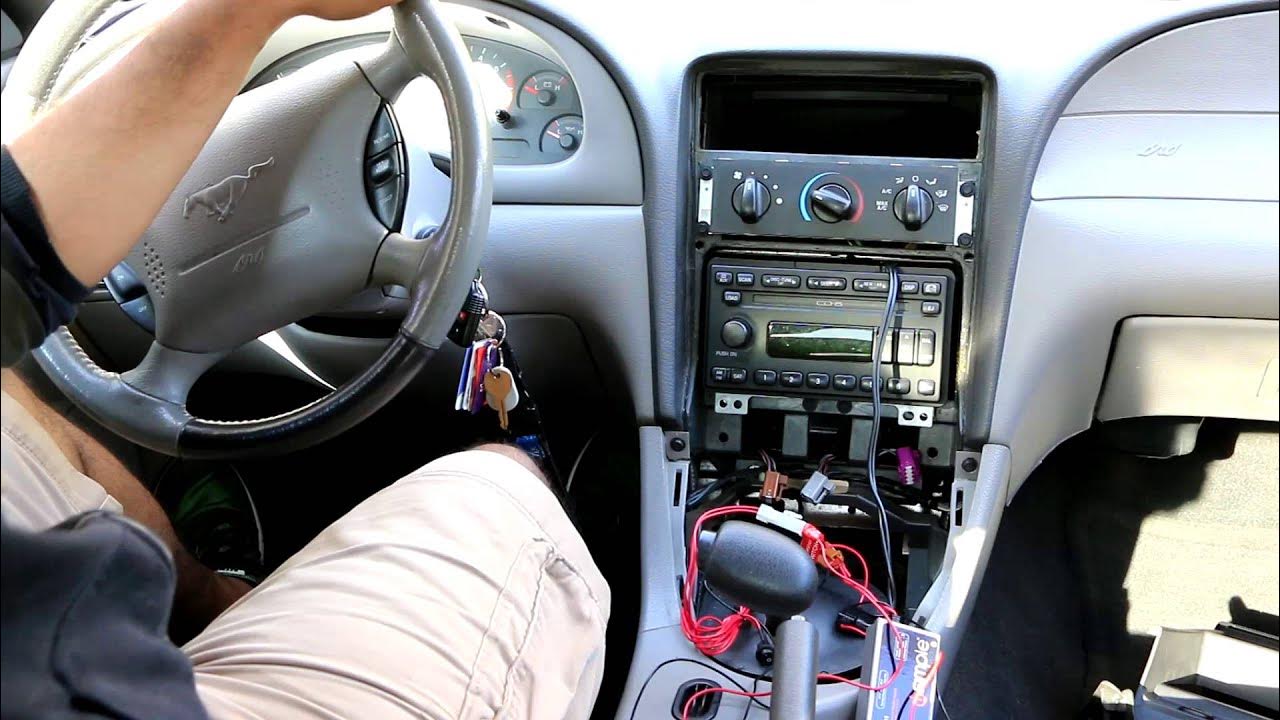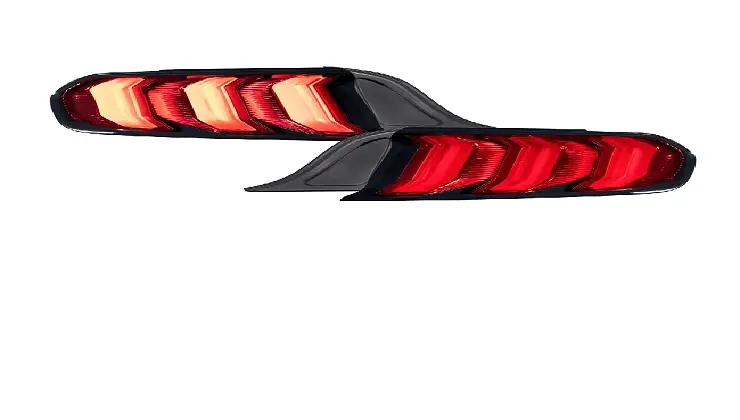Are you a performance enthusiast looking to tap into the raw power of the iconic Coyote engine for a boost? The decision between Gen 2 vs Gen 3 Coyote for Boost can be a tough one, as both have their unique strengths and characteristics.
In this in-depth article, we will explore the key features, pros, and cons, and ultimately recommend the best option for boosting your ride. So, let’s dive in and discover the untamed potential of these Native American muscle machines!
Contents
What is Coyote Engines?
Before diving into the specifics, let’s provide a brief overview of the Coyote engine series. The Coyote engines are V8 powerhouses produced by Ford, known for their impressive output and versatility. These engines have become synonymous with high-performance applications, ranging from classic muscle cars to modern sports cars.
Gen 2 Coyote Engines
The Gen 2 Coyote engine, introduced in 2015, brought several advancements over its predecessor. It features a 5.0-liter displacement, all-aluminum construction, and a DOHC design. With its increased compression ratio, improved cylinder heads, and revised intake manifold, the Gen 2 Coyote engine delivers impressive power and torque. Its variable camshaft timing and direct fuel injection contribute to enhanced efficiency and responsiveness. However, when it comes to forced induction applications, the Gen 2 Coyote may have certain limitations due to its internal components not being specifically designed for higher boost levels.
Key Features of Gen 2 Coyote for Boost
Here are some key features that make it stand out:
Performance Enhancements: The Gen 2 Coyote comes with various improvements over its predecessor, such as redesigned cylinder heads, upgraded camshafts, and increased compression ratios. These enhancements contribute to enhanced power delivery and improved overall performance, making it a solid choice for boost enthusiasts.
Direct Injection Technology: One of the major advancements in the Gen 2 Coyote is the inclusion of direct injection technology. This allows for precise fuel delivery, resulting in improved fuel efficiency and better throttle response. When combined with forced induction, the Gen 2 Coyote can achieve remarkable power gains without sacrificing fuel economy.
Lightweight Aluminum Block: The Gen 2 Coyote features a lightweight aluminum block, which not only helps to reduce overall engine weight but also enhances heat dissipation. This is crucial for maintaining optimal operating temperatures during demanding boost applications, ensuring the engine’s longevity and reliability.
Pros and Cons of Gen 2 Coyote Engines for Boost
Now that we have examined the key features of the Gen 2 Coyote engines, let’s weigh the pros and cons to help you make an informed decision:
Pros
- Well-established aftermarket support and tuning options.
- Lower initial cost compared to Gen 3 Coyote.
- Tried and tested reliability.
Cons
- Based on older technology.
- Limited factory power output compared to Gen 3 Coyote.
Gen 3 Coyote Engines
Ford’s Gen 3 Coyote engine, introduced in 2018, aimed to address the shortcomings of its predecessor and further optimize performance. This generation underwent significant upgrades, including a new dual-fuel system combining direct and port fuel injection, revised intake and exhaust systems, and a higher redline. The Gen 3 Coyote engine offers improved breathing capabilities and better flow characteristics, allowing it to handle higher boost pressures more effectively. It is stronger internals and redesigned cylinder heads contribute to enhanced durability and reliability, making it an attractive choice for boosted applications.
Key Features of Gen 3 Coyote for Boost
Let’s explore its key features:
Port and Direct Fuel Injection: A standout feature of the Gen 3 Coyote is its combination of port and direct fuel injection technology. This dual-injection system optimizes fuel delivery across different RPM ranges, resulting in improved power and torque throughout the rev range. It also facilitates better control over fuel mixture, which is particularly advantageous in boosted applications.
High-Flow Cylinder Heads: The Gen 3 Coyote boasts high-flow cylinder heads, which are designed to optimize air intake and exhaust flow. This enhancement allows for improved engine breathing, maximizing power output and efficiency. When paired with forced induction, the high-flow heads of the Gen 3 Coyote deliver impressive gains in boost applications.
Larger Bore and Increased Compression Ratio: With a larger bore and increased compression ratio, the Gen 3 Coyote unleashes even more power and performance compared to its predecessor. These design refinements enable the engine to handle higher boost pressures and generate greater horsepower and torque figures, making it an excellent choice for those seeking exhilarating performance.
Pros and Cons of Gen 3 Coyote Engines for Boost
Now that we have examined the key features of the Gen 3 Coyote engines, let’s weigh the pros and cons to help you make an informed decision:
Pros
- Advanced technology and performance.
- Higher factory power output compared to Gen 2 Coyote.
- Enhanced fuel efficiency with a dual-injection system.
Cons
- Higher initial cost compared to Gen 2 Coyote.
- Limited aftermarket support compared to Gen 2 Coyote.
Gen 2 vs Gen 3 Coyote for Boost: Comparison Table
To further aid in your decision-making process, let’s summarize the key differences between the Gen 2 and Gen 3 Coyote engines in a comparison table:
| Feature | Gen 2 Coyote | Gen 3 Coyote |
| Performance Enhancements | Redesigned heads, upgraded camshafts | Dual-injection, high-flow heads, increased compression |
| Displacement | 5.0 liters | 5.0 liters |
| Fuel Delivery System | Direct injection | Dual-injection (direct and port) |
| Block Material | Lightweight aluminum | Lightweight aluminum |
| Factory Power Output | Lower than Gen 3 Coyote | Higher than Gen 2 Coyote |
| Aftermarket Support | Extensive support and tuning options | Developing support, fewer options |
| Initial Cost | Lower cost compared to Gen 3 Coyote | Higher cost compared to Gen 2 Coyote |
| Fuel Efficiency | Good fuel efficiency for a boosted engine | Enhanced fuel efficiency with a dual-injection system |
Choosing the Right Coyote Engine for Boost
After careful consideration of the key features, pros, and cons of both the Gen 2 and Gen 3 Coyote engines for boost applications, it is clear that the choice ultimately depends on your specific needs, preferences, and budget.
If you prioritize a lower initial cost, well-established aftermarket support, and a proven track record of reliability, the Gen 2 Coyote engine is a compelling option. With the right modifications and tuning, it can deliver impressive performance gains for your boost project.
However, if you desire the latest technology, increased factory power output, and enhanced fuel efficiency, and are willing to invest in a higher-priced engine with growing aftermarket support, the Gen 3 Coyote engine should be your go-to choice. It’s advanced features and performance potential make it a true powerhouse for boosted applications.
Remember, both engines have their unique strengths and can be tailored to meet your specific goals with the right modifications and tuning.
FAQs (Frequently Asked Questions)
Q: Can I use the Gen 2 Coyote engine with forced induction?
A: Absolutely! The Gen 2 Coyote engine can handle forced induction setups. With the right modifications and tuning, it can provide significant power gains for your boost project.
Q: Can I use the Gen 2 or Gen 3 Coyote engine with a manual transmission?
A: Both the Gen 2 and Gen 3 Coyote engines are compatible with manual transmissions. Whether you choose to pair them with a manual or automatic transmission depends on your personal preference and the specific requirements of your vehicle.
Q: What modifications are necessary to boost the Gen 2 Coyote engine?
A: To maximize the potential of the Gen 2 Coyote engine for boost applications, you may need to invest in modifications such as upgraded fuel injectors, a high-flow exhaust system, a more aggressive camshaft, and a reliable forced induction setup like a supercharger or turbocharger.
Q: Are there any compatibility issues when swapping between Gen 2 and Gen 3 Coyote engines?
A: Swapping between Gen 2 and Gen 3 Coyote engines may require additional modifications and considerations due to differences in components and design. It’s recommended to consult with experts or professional mechanics to ensure compatibility.
Q: Will boosting my Coyote engine void my warranty?
A: Modifying your Coyote engine for boost may void your warranty. It is important to check with the manufacturer or consult with a knowledgeable professional to understand the impact of modifications on your warranty.
Conclusion
When it comes to choosing between the Gen 2 vs Gen 3 Coyote for boost applications, both options have their strengths and considerations. The Gen 2 Coyote provides a reliable and cost-effective platform with well-established aftermarket support, while the Gen 3 Coyote offers advanced technology, higher power output, and enhanced fuel efficiency.
Whichever engine you choose, be sure to consider the necessary modifications, tuning, and maintenance requirements to unlock the full potential of your boost project.





